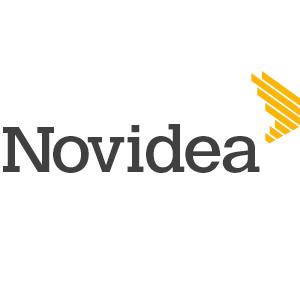Novidea Blog: Data Monetization Definition & How to Turn Your Insurance Brokerage Data into Revenue
Market commentators are positive about the outlook for the broker industry. Company valuations are high, profitability is stable, and revenue growth is expected to increase throughout 2018.
But that’s not to say there aren’t challenges to be faced. Product commoditization leading to a drop in prices, competitive pressures and, in the UK, Brexit looms large.
In a previous blog post we explained the benefits of data in insurance and how it can help meet challenges across the entire business. Brokerages already collect data at every opportunity, whether it’s from website visitors, sales visits, customer service logs, premium payments, etc. But they’re not making full use of it.
The answer to that problem is to monetize the data.
Data monetization definition
There are differing views of what data monetization means.
Some refer to it as the process for generating new revenue streams by taking data and selling it to third parties (as an out of industry example, Monsanto has built a successful separate business by monetizing its agricultural data).

However, we use the alternative data monetization definition as the process of using data for measurable business performance improvements.
At its heart is the need for the organization to become data-driven and make decisions based on information rather than intuition, belief, or observation.
Data Monetization for Insurance Brokerages
Data is an asset that needs to be actively managed like other organizational assets such as, knowledge, cash, or property.
Monetization is the process of turning your data asset into currency (profits) by increasing revenues or decreasing costs.
Technology has a central role in achieving this objective, but before turning to technology matters, a monetization strategy has to be defined and the business model needs to be changed to rely on and fully exploit data.
In its simplest form, there are five steps brokers should take towards monetizing their data.
1. Set clear objectives and priorities
A McKinsey survey on the use of data and analytics found increasing revenue was the main objective of most respondents, and sales and marketing functions were the focus of their monetization activities.
Whatever your goals are, make them real by setting clear objectives, priorities, metrics, and timelines.
Some examples of metrics you want to see improve include:
- Increases in revenue by:
- Business line
- Net premium income
- Net premiums written
- Policyholder surplus
- Reductions in processing time for renewals or expenses relative to premiums.
2. Collect the right data
Control what you collect. Too much and you’ll be swamped by a data tsunami and spend more time working out what to do with it instead of extracting the value. If it doesn’t support your monetization objectives, think hard about whether you need it at all.
And look beyond the obvious data sources — your business applications — for value.
Some of the most valuable data comes from unstructured sources — documents, emails, customer service logs, social media, and so on — meaning technology tools must be able to collect, store, and analyze data of that type.
In general, real-time data has the greatest value, if it’s linked to a process for making real-time decisions, and collecting historical data will help spot trends that can be used for business planning.
3. Manage it properly
Data, like any asset, has to be actively managed to prevent its value from depreciating, and to do that you need an effective data management method that brings together people, process, and technology.
Business leaders should be appointed as data owners, responsible for defining the business rules that decide what’s collected and where, when, and how it will be used.
Data quality activities will remove duplicates, fix errors, or delete data that’s no longer valuable.
And data storage techniques take care of security and segment the data for use by different analytical and business intelligence tools.
4. Use powerful analytics to create actionable insights
Moving from raw data to valuable insights that will help improve the metrics we discussed earlier isn’t a linear process. Uncovering the real value in data is like solving a complex puzzle: each piece can be understood, but only when it’s joined with others does the outcome reveal itself.
Transactional data, seemingly mundane when viewed alone, can help identify cross-sale opportunities when combined with buying patterns over several years or sales enquiries they’ve recently made.
Claim data can be combined with industry and peer group comparative loss experiences to determine limit adequacy and suitability for retention.
This type of slice and dice analysis is where the real value of your data presents itself.
Use technology to make the hard work easy
There’s a bewildering array of tools and technology that can be used for monetizing data: web servers, data lakes, databases, predictive, prescriptive and descriptive analytics, strategic, tactical and operational dashboards….the list goes on.
Fortunately, modern broker management systems take care of the technical complexity by integrating the different elements, meaning you can focus on using the outputs to improve the business.

Understanding the data monetization definition and exploiting data to the fullest are now widely accepted as a business imperatives for the insurance distribution industry, so much so that the latter was featured as one of the challenges at the BIBA 2018 hackathon earlier this year. Managing data effectively is the first step towards the long-term benefits of data monetization.

